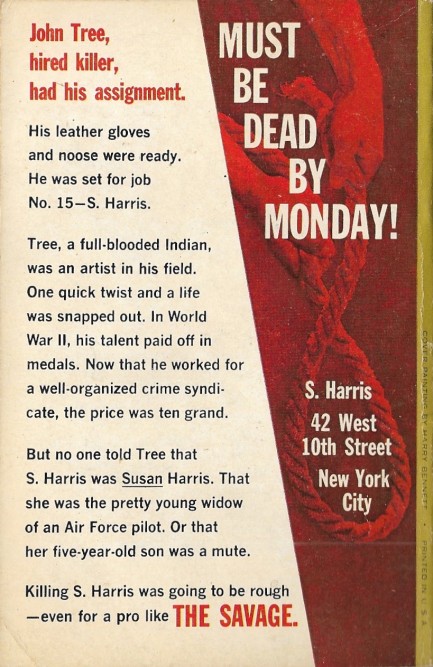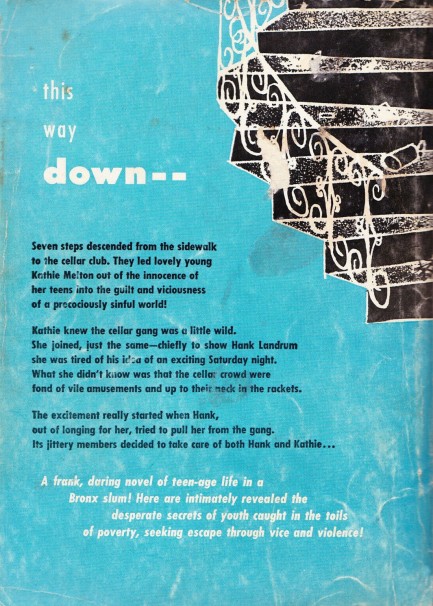 He kills completely without reservation. 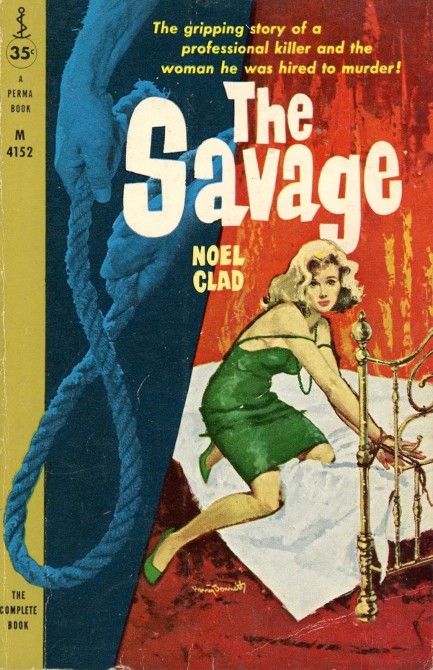
Noel Clad was a promising writer who died in a plane crash when he was thirty-seven. His novel The Savage shows some of that promise. It's about a professional killer named John Tree who's been summoned from his Wyoming ranch by the Chicago syndicate to go to New York City and dispose of an S. Harris. Like many fictional killers Tree has a code: he doesn't kill women. When he arrives in New York he learns that S. Harris is Susan Harris, which dismays him. Then the person who's bought the contract and is calling the shots tells Tree to rape Susan before killing her. Next he finds out she's a single mother with a mute five year-old son. None of it sits well with Tree, but it doesn't cause him to flip sides. He just wants out. He asks to be replaced on the job and be done with the situation. Out of sight, out of mind. His employers agree and send two replacement hired guns to do the job. Tree meets with them and realizes they have no ethics—they will rape their target, and they'll murder her son too.
There are hundreds if not thousands of regular mob hitmen in literature and cinema, so why not do something different? It shouldn't be a controversial idea, but sadly, so many these days consider it to be an assault on territory they own somehow. But diversification isn't a new thing. Clever writers have been doing it all along. Clad does it in The Savage. The killer for hire, the anti-hero John Tree, is full name John Running Tree, member of the Shoshone tribe, Native American by both blood and culture. That simple change takes the book in a different direction than other hitman tales. Here we have a killer who hates to think about his impoverished youth on a reservation, who glorifies Native American tests of manhood, and who sees a stripper wearing a tribal headdress as a prop and is angered. You get interesting passages like this:
Being here made him think of religion and how little he knew and the things that had passed for it when he was little: the spirits and the half-reverent amulets and charms. He remembered as he had not for years the lupine tea they drank for Manhood, remembered the girls on the Station eating mushrooms to see if my true love lies, and his own watching of wood smoke that twisted north when the hunting would be good. Even Tall Kite had no longer really believed in the thousand tribal spirits of the upland and the plain, the grass, the insects, the deer and the hawk. And God, in the Bureau of Indian Affairs, was no more than the price of chocolate milk. But in this hall, he had a pleasant feeling, relaxed, as though he was on a mountain all by himself.
1958 this was written, with loads of identity angst, as if it were published yesterday. John Running Tree moves like a folkloric wraith through New York City and tries to prevent Susan's defilement and death. The transgressiveness of the rape angle surprised us, as did the plot point that Tree kills by wire garrotte (not rope, as shown on the cover), but those added to the stakes of a harrowing and austere tale. Are there negatives? A few. Clad loses his tight control over the narrative from the moment Susan realizes—as she must—that Tree isn't just a nice guy hanging about for fun. Clad later forces the usage of Shoshone pictograms into a scene where the child mutely communicates an important clue. It might have worked under the right conditions, but in this case defied credulity. Other authorial errors accrue. Even so, good book. We'd read Clad again.
 Human nature at its most savage. 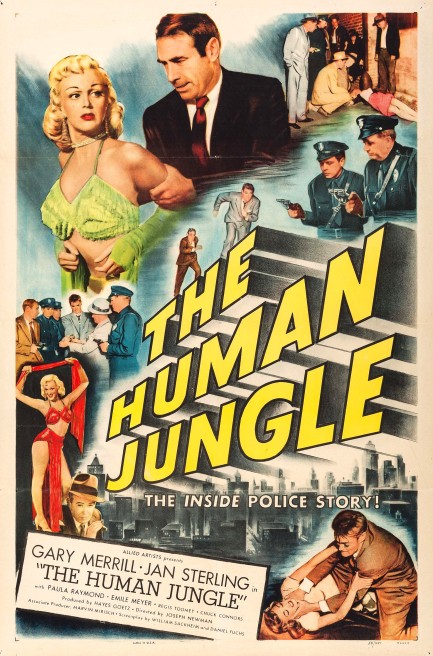
This busy promo poster was made by Allied Artists for its drama The Human Jungle, which starred Gary Merrill as a tough cop who tries to whip his Jefferson Heights precinct into shape, both inside and outside the station house. Merill would rather transition out of police work and into the legal profession, but when he's tapped to cleanse the Heights he goes at it with a vengeance. His obstacles include lazy cops, emboldened delinquents, a hostile press, and a set of hardened criminals who feel impervious. Jan Sterling co-stars as a singer and dancer who might hold the key to putting a murderer behind bars. But Merrill will have to turn her first, and she's unwilling, to say the least.
For some people, the hardball tactics used by Merrill might bring to mind all the unlawful force settlements police departments nationwide constantly pay, because innocent people are always caught up in such crusades. For example, New York City paid out $143.2 million in civil rights damages in 2022, this despite the fact that prosecutors refuse to bring charges in about 95% of filed claims. But old movies avoid such sticky issues, and because they operated under censorship rules it's only criminals that hurt people, and Merrill comes out glorified and vindicated.
Add it up and what you get is an unoriginal and one-dimensional police drama that in this day and age feels greatly out of touch. Is there any reason at all to watch it? Maybe. It's pretty well made. It features young Chuck Connors as a heavy. It tries to mix in homelife strife in the form of Paula Raymond as Merrill's wife, and is reasonably successful on that front. The always interesting Sterling does a fun song and dance number that adds a little pep to the middle of the film. And there's a decent climax set in a brewery. Everything else in The Human Jungle is pretty limp. It premiered today in 1954.
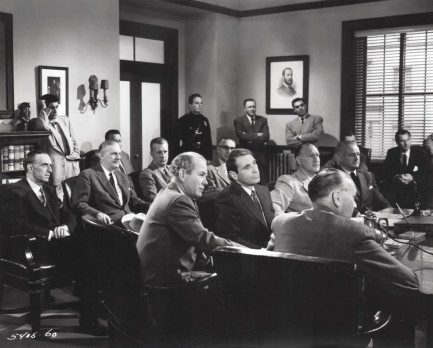 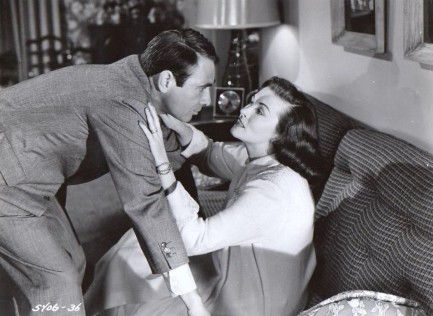 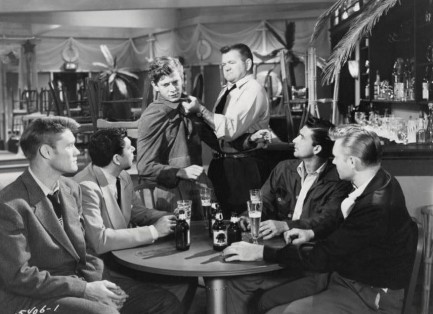 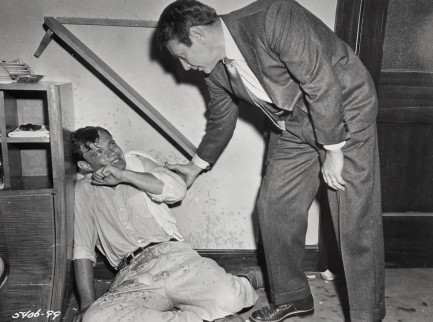 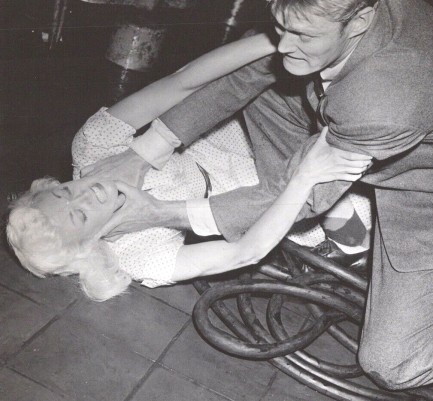 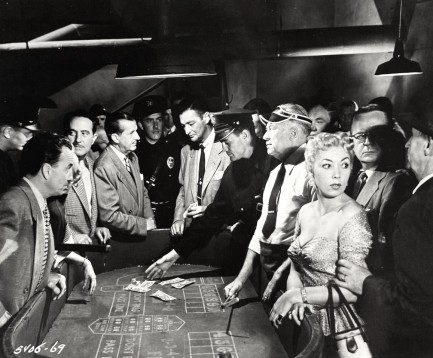   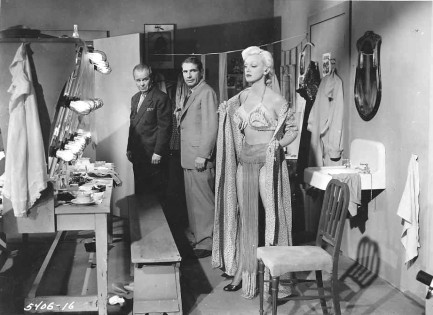 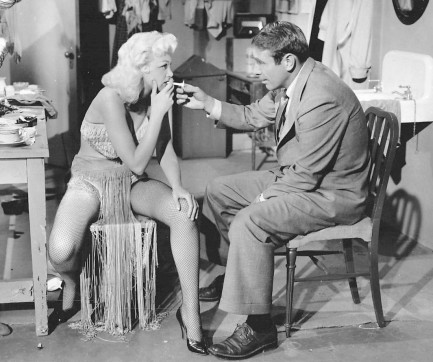 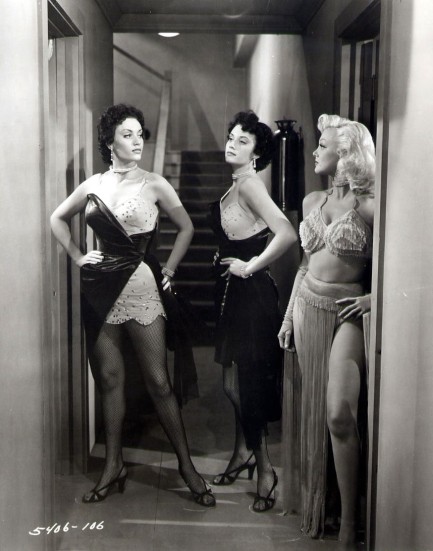 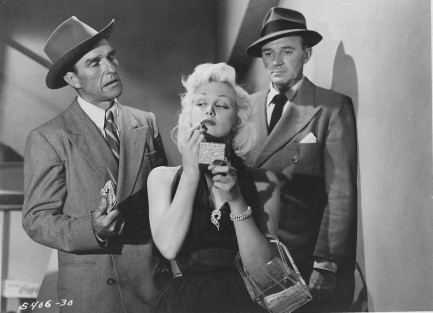 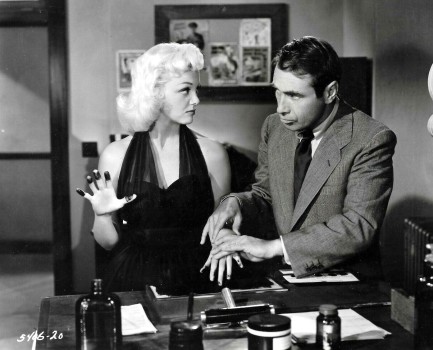 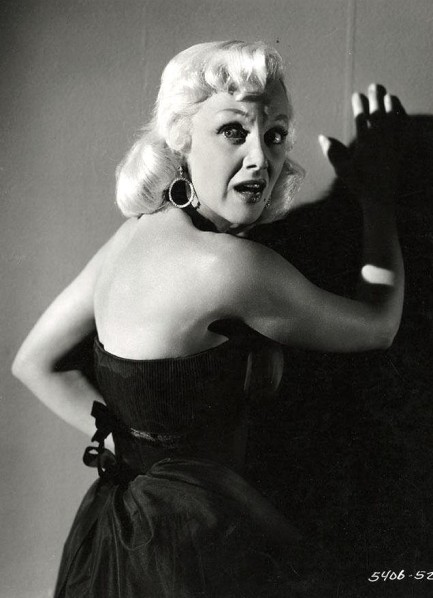 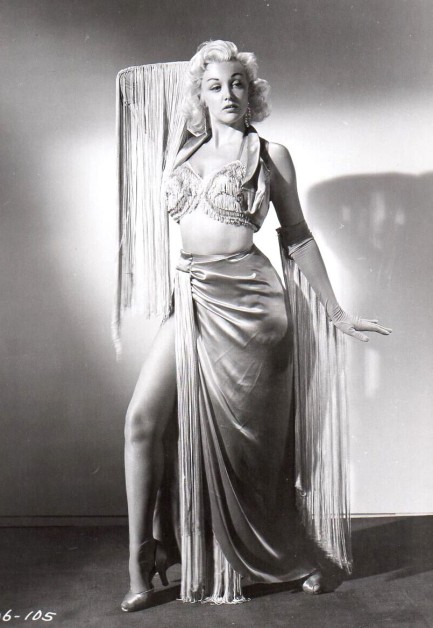 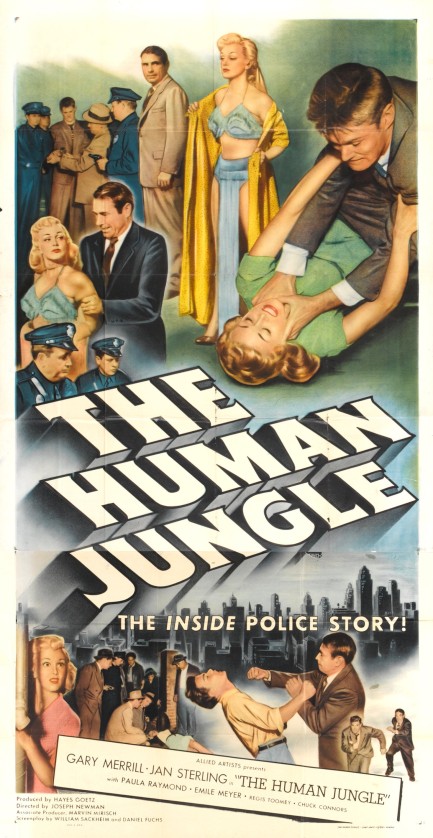
 Gemser travels to many distant cities, and meets the worst people in every one of them. 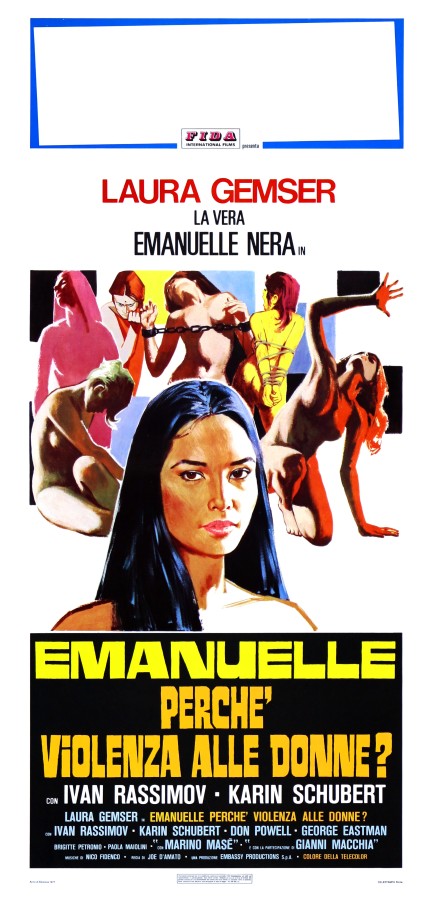
To say that Laura Gemser's Emanuelle films are hit and miss is an understatement of epic proportions. While early entries have the happy softcore feel needed for thought-free diversion and occasional boners, later offerings veer into dark territory. Emanuelle - Perché violenza alle donne? is in the latter category. An Italian production, the title translates as “Emanuelle - Why violence against women?” Erotic cinema and social commentary don't usually mix well—not because they're mutually exclusive, but because the filmmakers never have the skill to pull it off. In the U.S. the movie was retitled Emanuelle Around the World, which sounds fine, but its international English title was changed to The Degradation of Emanuelle. Uh oh.
Gemser's adventures begin in San Francisco when her New York based photo-journalist character enjoys a satisfying boning in the back of a truck. But soon she's off on her next assignment, a titillating expose of a Kama Sutra commune in Asia. Once there she meets creepy guru George Eastman and uses her superior sexual skills to make his holiness transcendentally ejaculate too fast. Up to this point Perché violenza alle donne? is somewhat fun. But next Gemser meets up with pal Karin Schubert in Rome and joins an assignment to expose a sexual slavery ring. Wait—didn't she do that in Emanuelle and the White Slave Trade? Yup, but slavers never quit. This collection of bad men are unusually horrible. One is is a burn victim who rapes his captives. Another has a penchant for bestiality.
Obviously, during the 1970s filmmakers didn't really understand the idea of unintentionally minimizing serious subject matter the same way they do today. It was the “what-the-fuck-let's-give-it-a-try” era, and taking such risks produced some of the greatest cinema ever. But in this case writer/director Joe D'Amato and co-writers Maria Pia Fusco and Gianfranco Clerici failed. Badly. A movie on the subject of slavery and rape would be unpleasant but important if it were a Claire Denis drama or a Laura Poitras documentary. Mixing it into a flyweight sex film doesn't add dramatic weight—it adds discordance, embarrassment, and insult. It was a total miscalculation. You could potentially watch the film until Gemser departs the Kama Sutra commune, then turn it off. If you don't, you have nobody to blame but yourself.
However, we try to see the good in every movie we screen, so we should note that there are some high points. We'll list them. The Emanuelle films were typically shot in exotic locales, and in this case not only does D'Amato set scenes in New York City and San Francisco, but in Kathmandu, Rome, Hong Kong, and—for real—Teheran. Gemser is a limited actress, but one who always does her best with preposterous scripting. Schubert is a stolid co-star. Underutilized Don Powell is always a welcome sight. And lastly, many of the production photos, some of which appear below, are interesting. That's about all the good we can find. We'll just slide Emanuelle - Perché violenza alle donne? into ye olde metaphorical trash bin and forget it ever happened. It premiered in Italy today in 1977.                 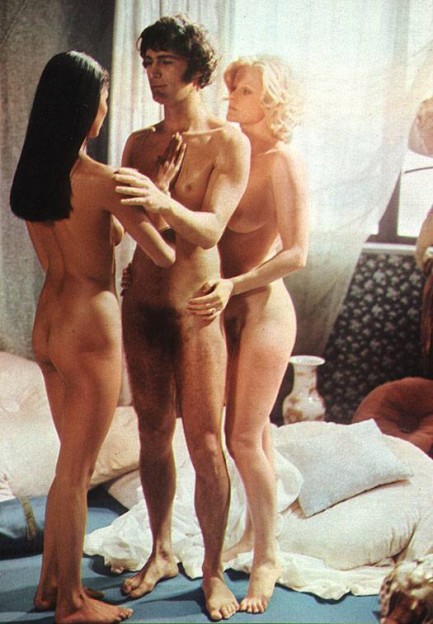 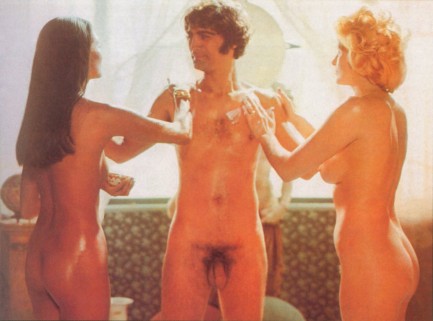   
 Listen, baby, I steal, extort, and sell drugs. You had to expect me to have unconventional views on relationships. 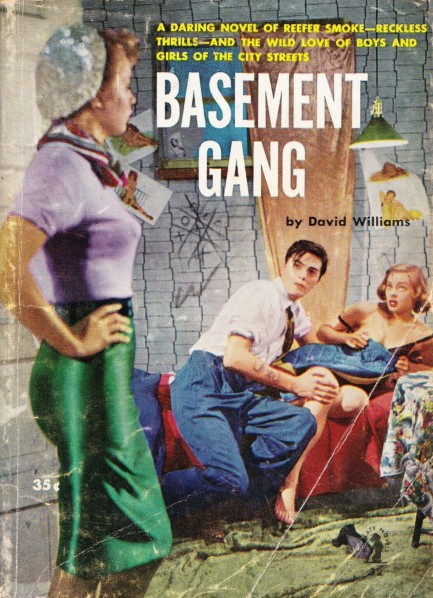
This photo cover for David Williams' juvie delinquent novel Basement Gang is one we've admired for years. Enticed by its colors and out-of-focus foreground figure, and finally finding it at a good price, we snagged a copy. Originally published in 1953 by Complete Novel Magazine, with the above edition coming the same year from Intimate Novels, it's a cautionary tale told in detailed if clinical style following Bronx born Kathie Melton, who out of boredom dumps her solid boyfriend Hank, is lured through the forbidden doorway of the local underground club Comets, and is soon drunk, drugged, and de-virginized to the limits of her ripe young body. Kathie is willing to repeatedly indulge in all these activities, but she hates that the hepcats with whom she's hooked up are criminals. Hey, sitting around being disaffected all day requires some sort of funding. Kathie rolls with the life of petty crime, however when a romantic rival sets her up to be beaten and (almost) raped by a dangerous thug, the square life starts to look good again. But leaving Comets and co. isn't simple. As juvenile delinquent fiction goes, Williams did a good job with this one, even if his prose doesn't invite deep emotional involvement. We think it was his only novel, but just in case we'll keep our eyes open for more.
 It's not robbery if someone wants you to take it. 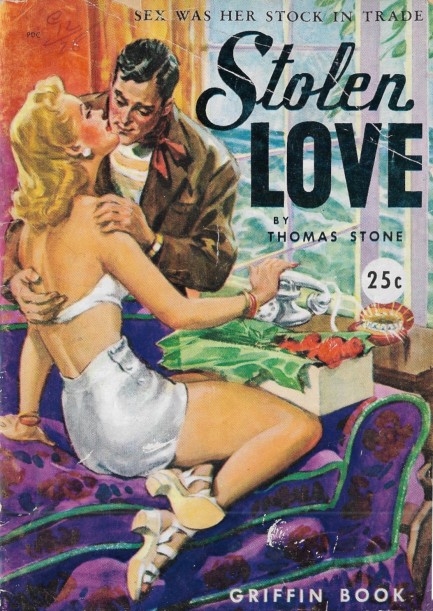
Above is another digest novel from Florence Stonebraker, this time writing as Tom Stone to produce Stolen Love. It was originally published in 1937 as Too Much Love, with this Griffin Books re-issue arriving in 1946 fronted by a cover painted by Glenn Cravath. The book deals with popular New York City radio personality Kay Brinkley—better known as the Voice of Romance—who hosts a lonely hearts call-in show, but is actually cynical about love and thinks her job is a high paying joke.
Her boyfriend asks her to head out to San Francisco to close a business deal for him, and she develops a case of wandering eye before the train even reaches the Rocky Mountains. Once out west she's smitten with the man who's supposed to provide her with important papers, while a couple of other guys, in turn, are seriously smitten by her. Complications arise when her NYC boyfriend unexpectedly flies to San Fran, putting him in direct romantic competition with his business acquaintance.
Kay gets laid with a total of three men as required by most of these digests, and attacked by one, definitely not a requirement, before finally returning to her original boyfriend, a forbearing sort who doesn't begrudge Kay her carnal explorations. The story is a tangled web, written in the usual Stonebraker style, already well in evidence though this was one of her first books. It's no wonder she became such a popular author. She's no Jane Austen, but in the realm of sleazy romance she's about as good as it gets.
 Even in the height of summer New York City can be a cold, cold place. 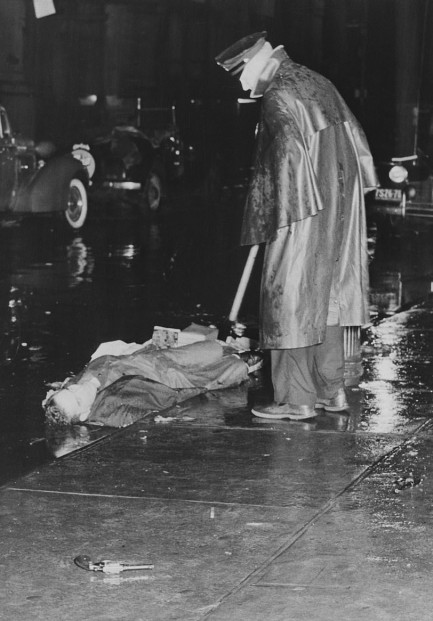
In this photo made today in 1930, a policeman stands over the body of Louis Riggiona, who had been shot twice in the heart by two gunmen as he and his brother Joe exited a restaurant in New York City's Bowery district. Joe fled and avoided injury, while the gunmen dropped their weapons (one pistol is visible in the foreground) and escaped. Louis Riggiona had become the latest casualty in what was known as the Castellammarese War, a Mafia power struggle whose opposing figureheads were Salvatore Maranzano and Joe Masseria. Maranzano was from Castellammare del Golfo, Sicily, thus the name of the conflict. He won the war, but got to be capo di tutti i capi for only five months before he too was murdered.
 Would you go through a nightmare to make a dream come true? 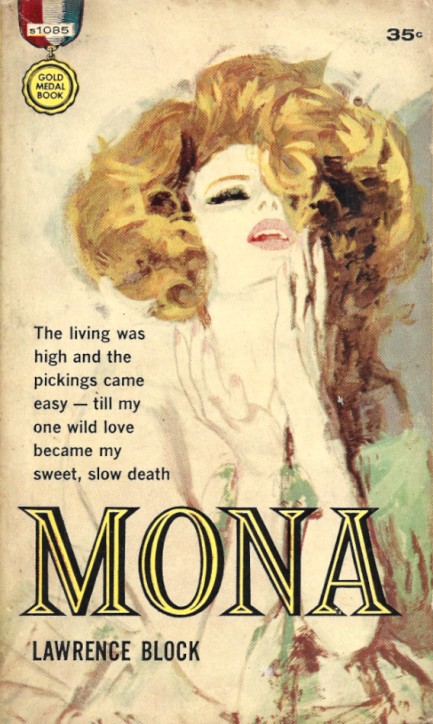 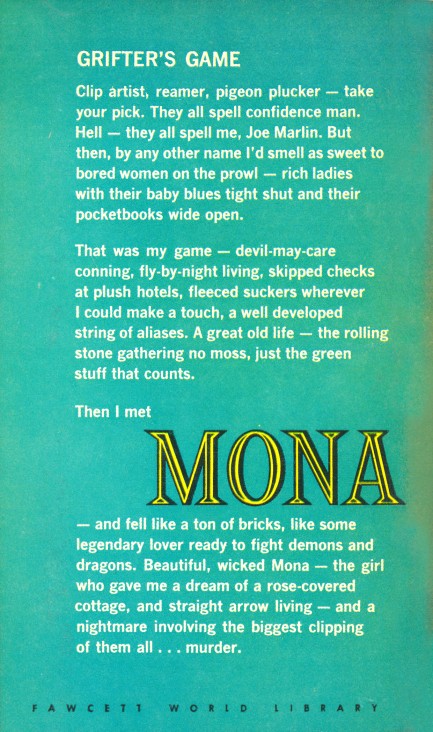
Lawrence Block's 1961 novel Mona, which has also been published as Grifter's Game and Sweet Slow Death, is the old classic: a husband, a wife, and a lover talked into murder. The suspension of disbelief test here comes at the outset, when longtime grifter Joe Marlin steals a suitcase that happens to contain a fortune in heroin, then accidentally meets and starts an affair with the eponymous sexpot Mona, who's married to the suitcase's owner. Quelle coïncidence. Or not. Marlin has lived by wits and deceit for a long time, and his instincts scream for him to gallop out of town with the horse. Instead he braves organized crime retribution because he's fallen in love. Dames'll be your ruin every time. Good stuff from Block, fast and fun, with a crisp twist at the end. The cover art on this Gold Medal edition is uncredited.
 A song thought forgotten can always be remembered. 
This photo shows Broadway actress Altonell Hines, who performed on the New York City stage during the 1930s in the shows Porgy and Bess and Four Saints in Three Acts. Unfortunately, like many early Broadway performers, after her career she faded into obscurity. However, she was somewhat rediscovered, partly thanks to a photographic portrait shot in 1934 by the famed Carl Van Vechten as part of an unfinished project titled, "Noble Black Women: The Harlem Renaissance and After.” The photo wasn't printed until 1983 when it went on exhibition at the Smithsonian Institute. Hines never saw it—she'd died in 1979.
Nevertheless, she's an interesting example of how obscurity never has to be permanent for stars of yesteryear. Archivists and biographers have always resurrected long dead public figures, but the creation of the internet has accelerated that process, and now hundreds of formerly forgotten personalities from history are restored into the cultural consciousness each year. It's the coolest thing about the internet, if you ask us. The above shot, which is not from the Noble Black Women collection, was made in 1935. You can see a few more images of Hines on the website of the New York Public Library, at this link.
 Gangster life has great benefits but the retirement plan leaves a lot to be desired. 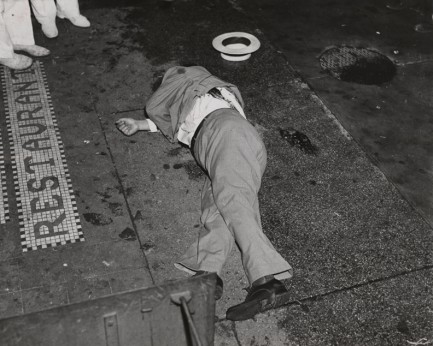 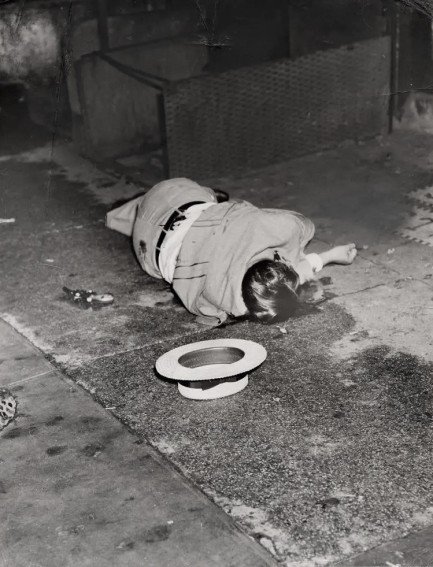
It seems like the same lesson is imparted by nearly every vintage Mafia photo we run across—ambition is a double-edged sword. Dominick Didato, aka Terry Burns, who you see above in a photo made by Arthur Fellig, aka Weegee, lies dead on a New York City street where he was gunned down today in 1936. He was killed for interfering with rackets run by Lucky Luciano. It was a low percentage play. Luciano was literally the most powerful mobster in the U.S. at the time, and as the saying goes, you come at the king, you best not miss.
 She could tell them the secret but it would be a bad Korea move. 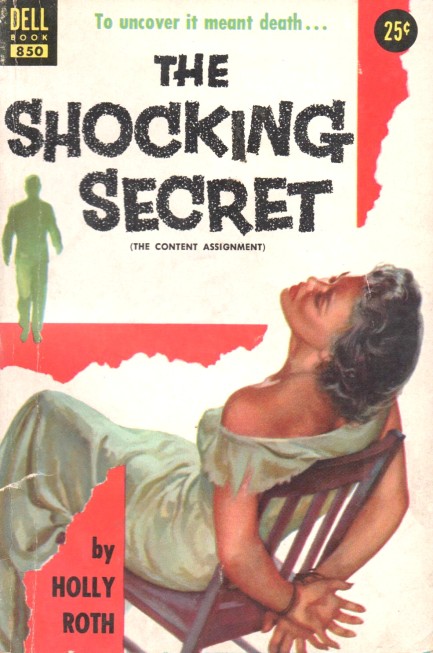
Holly Roth, who also wrote as P.J. Merrill and K.G. Ballard, originally published The Shocking Secret as The Content Assignment in 1954. This Dell edition came in 1955 with William Rose cover art. The story, set beginning in 1948, deals with John Terrant, a British reporter in Berlin whose American love Ellen Content is a CIA agent who disappears during a mission. Nearly two years later her name turns up in a newspaper story that says she's a dancer in New York City. So Terrant crosses the pond to track her down but ends up in the middle of the Cold War, with bad commies and the whole nine.
Roth infuses her tale with an Englishman in New York fish-out-of-water quality, which is occasionally amusing and adds interest, but in the end the entire enterprise comes across lightweight—which is to say it lacks menace and the proper amount of intellectual heft needed for a book about the political/ideological clash of the era. And another issue, though an admittedly nit-picky one, is that the surprise of the title, which we mostly gave away in our subhead, isn't all that shocking. Dell never should have renamed the book.
Moving on to Roth herself, she's one of those writers whose life had an eerie parallel with her fiction. Her 1962 novel Too Many Doctors is about a woman who falls off a ship and loses her memory. In 1964 Roth disappeared from her husband's yacht one stormy night off the coast of Morocco and was never seen again. Officially, her death was an accident. If we get ambitious maybe we'll read Too Many Doctors. While we can't recommend The Shocking Secret, we wouldn't be surprised if several of her other books are better. Her reputation would seem to suggest it.
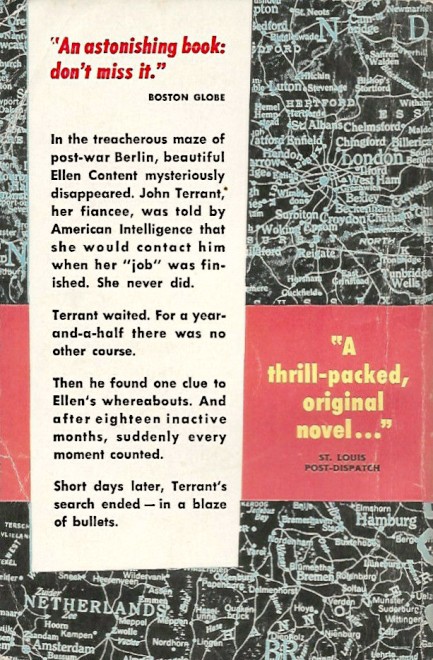
 |  |
|
 |

The headlines that mattered yesteryear.
1939—Holiday Records Strange Fruit
American blues and jazz singer Billie Holiday records "Strange Fruit", which is considered to be the first civil rights song. It began as a poem written by Abel Meeropol, which he later set to music and performed live with his wife Laura Duncan. The song became a Holiday standard immediately after she recorded it, and it remains one of the most highly regarded pieces of music in American history. 1927—Mae West Sentenced to Jail
American actress and playwright Mae West is sentenced to ten days in jail for obscenity for the content of her play Sex. The trial occurred even though the play had run for a year and had been seen by 325,000 people. However West's considerable popularity, already based on her risque image, only increased due to the controversy. 1971—Manson Sentenced to Death
In the U.S, cult leader Charles Manson is sentenced to death for inciting the murders of Sharon Tate and several other people. Three accomplices, who had actually done the killing, were also sentenced to death, but the state of California abolished capital punishment in 1972 and neither they nor Manson were ever actually executed. 1923—Yankee Stadium Opens
In New York City, Yankee Stadium, home of Major League Baseball's New York Yankees, opens with the Yankees beating their eternal rivals the Boston Red Sox 4 to 1. The stadium, which is nicknamed The House that Ruth Built, sees the Yankees become the most successful franchise in baseball history. It is eventually replaced by a new Yankee Stadium and closes in September 2008.
|

|
|

It's easy. We have an uploader that makes it a snap. Use it to submit your art, text, header, and subhead. Your post can be funny, serious, or anything in between, as long as it's vintage pulp. You'll get a byline and experience the fleeting pride of free authorship. We'll edit your post for typos, but the rest is up to you. Click here to give us your best shot.

|
|


